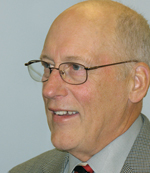Advertisement
Grab your lab coat. Let's get started
Welcome!
Welcome!
Create an account below to get 6 C&EN articles per month, receive newsletters and more - all free.
It seems this is your first time logging in online. Please enter the following information to continue.
As an ACS member you automatically get access to this site. All we need is few more details to create your reading experience.
Not you? Sign in with a different account.
Not you? Sign in with a different account.
ERROR 1
ERROR 1
ERROR 2
ERROR 2
ERROR 2
ERROR 2
ERROR 2
Password and Confirm password must match.
If you have an ACS member number, please enter it here so we can link this account to your membership. (optional)
ERROR 2
ACS values your privacy. By submitting your information, you are gaining access to C&EN and subscribing to our weekly newsletter. We use the information you provide to make your reading experience better, and we will never sell your data to third party members.
Energy
Weapons Labs' New Directions
With planned downsizing, labs will chase more nonweapons contract R&D
by Jeff Johnson
November 19, 2007
| A version of this story appeared in
Volume 85, Issue 47
THE FOCUS on nuclear weapons science and engineering at the Department of Energy's three nuclear weapons laboratories—Lawrence Livermore, Los Alamos, and Sandia National Laboratories—will be transformed, say officials in the National Nuclear Security Administration (NNSA), which oversees DOE's nuclear weapons work.
NNSA will aggressively seek national-security-related but nonweapons contract work, David H. Crandall, NNSA assistant deputy administrator for research, development, and simulation told C&EN in an interview on Nov. 14. Earlier, NNSA officials announced that the workforce of the three weapons labs will be cut by 20-30% over the next 10-20 years and that the size of the facilities will be reduced by one-third.
"We fundamentally do not see the weapons budget account growing over time," Crandall said. "We do see, however, the importance of the labs and their science base as essential to the nation, but we are going to have to look at our role in a different way. I don't think the status quo of what we have done in the past is sustainable in the future.
"We are moving from a mode where we would tolerate research that doesn't interfere with our nuclear weapons mission to one in which we are encouraging new research that is synergistic to our mission," Crandall continued, adding that researchers outside NNSA will have to pay the full price of using lab staff and facilities.
He predicts the labs will have more nonweapons research partners and a more diversified research portfolio and will operate in a more competitive environment. Crandall acknowledges that the labs were well-funded in the past and that they have high overhead charges for contract work, which could stymie new contracts. He laid out a new system intended to lower costs by streamlining operations and eliminating and consolidating duplicate facilities.
Crandall has met with the directors of the three labs to assess their national security R&D capabilities that could be of interest to the Department of Defense, DOE Office of Science, Department of Homeland Security, and private companies.



Join the conversation
Contact the reporter
Submit a Letter to the Editor for publication
Engage with us on Twitter